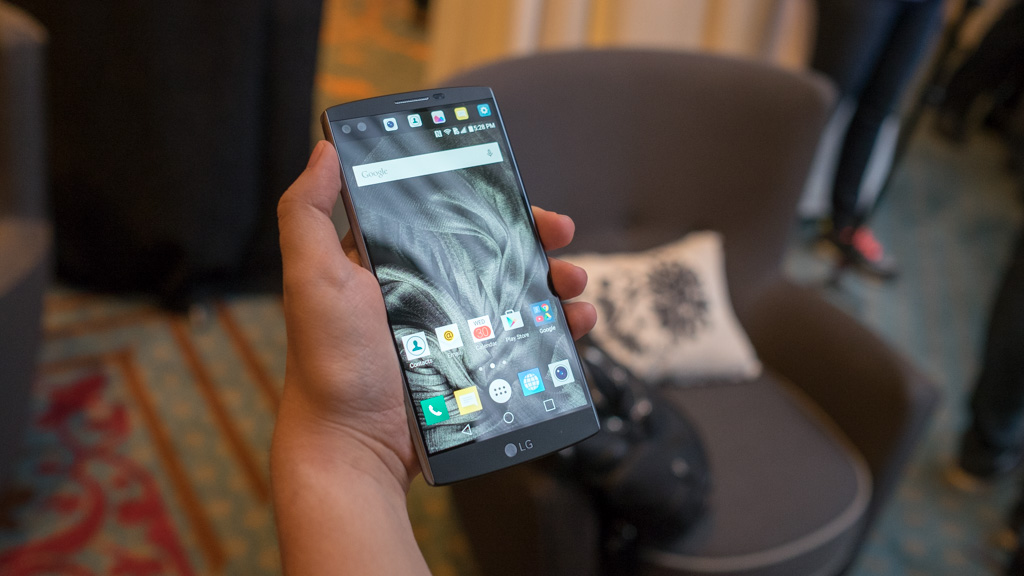Why you can trust TechRadar
The LG V10 has a color-rich main 5.7-inch, quad HD display that expands on the screen size of the 5.5-inch LG G4 in a noticeable way: touching the corners of its 2,560 x 1,440-pixel resolution and 515 pixels per inch (ppi) takes a phablet-sized reach.
Then, and here's where the LG V10 becomes a true Frankenstein-like marvel, it tacks on a 2.1-inch panel at the top, in effect taking the display size to a larger-than-Life's-Good 5.9 inches.
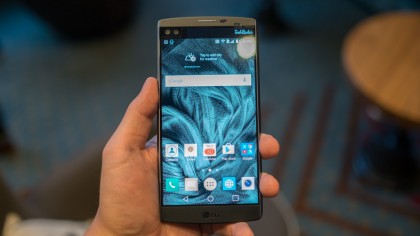
This always-on second screen puts the size over the top, even if it doesn't run the full width of the main display. Its two, beady selfie camera eyes are directly to its left, so it ends up taking on a 160 x 1,040 resolution.
The newsticker-like strip has its own resolution and a separate backlight component to it, but when both screens are on, it all looks like one seamless display under an uninterrupted sheet of glass. I must emphasize that if you buy the LG V10, get ready to stretch those fingers.
The extra reach is worth it for faster navigation. It serves as a quick way to glance at the time, weather and notifications, or to switch out my favorite apps. Both Apple's iOS 9 and Samsung's Galaxy S6 Edge+ do this, too, but with hidden menus that are harder to reach.
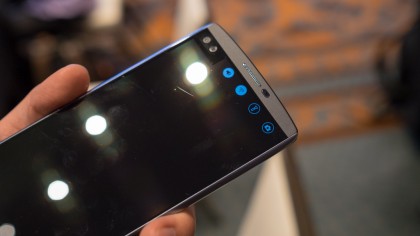
The LG V10's always-on top display dimly shines information and settings widgets, even when the main screen is off. Several of the best smartwatches include this handy feature, so why not on a much more widely used phone?
Multitasking is a bit easier than usual, with my most recent apps always present on the top, and incoming calls, text notifications and calendar appointments always present on the top, leaving the main display free of distractions.
I really hate staring at Google Maps directions in a new and completely unfamiliar city, only to have the street name I want to turn on covered up by a text message. I usually have to wait for the message to pass or dangerously swipe it away while driving, but not anymore.
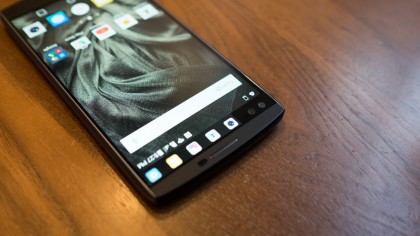
By design, LG V10's second screen artfully gets around these problems. It's not at all like the rear, e-ink second screen of the YotaPhone 2, though it has the same battery life-saving goal. It also differs from the curve-mounted Samsung Galaxy S6 Edge+ with its sideways orientation.
There's no other phone out there with a dedicated display like this, so the LG V10 is in a class of its own. It adds to the normal, quad HD display I'm used to seeing, yet remains practical.
Fingerprint sensor
The LG V10 fingerprint sensor can be fast and accurate if properly setup, but it combines the power button and scanner, making it a two-step process to turn on and unlock my phone.
That automatically makes it inferior to the LG-made Nexus 5X and Huawei's Nexus 6P Imprint Sensor, even though all of these biometric sensors come from the same Swedish supplier.
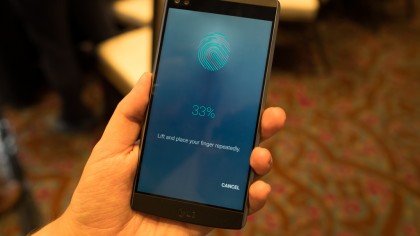
I appreciated how these Google-commissioned phones could wake and unlock in an instant by gently touching their large, back-mounted sensors without having to reach for the sleep/wake button on the frame.
With the LG V10, I have to press the tiny rear-facing power button and hold my finger there to unlock the phone. It can take the same amount of time, but only if it works flawlessly the first time around.
I have experienced a much greater fail rate with the LG V10 fingerprint sensor than either of the two latest Nexus phones, the Samsung Galaxy Note 5 and the iPhone 6S Plus. Remapping all of my fingerprints in the setup menu helped, but marginally.
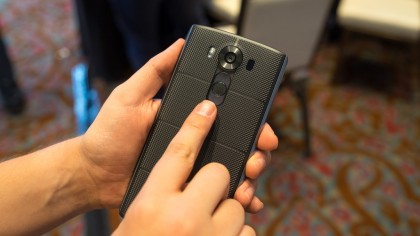
I think the biggest problem is that the fingerprint sensor is embedded into a tiny power button. It's smaller than it should be and therefore whenever I register my fingers, it can only capture so much imaging data at once. By placing my finger there in an awkward way later on, I see the phone asking me to "Try Again," to the point that I'd rather unlock it via PIN.
I'm pleased to see LG include a fingerprint sensor on the V10, but combining the sensor with a way-too-small power button leads to more hassle than it's worth.
Current page: Two displays and fingerprint sensor
Prev Page Introduction, design and display Next Page Camera